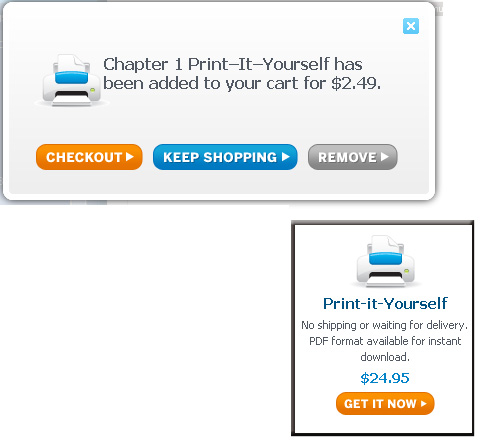So I’m designing and facilitating a new course on Peer2Peer University (P2PU) that I am really super excited about. I’ve been wanting to blog about it, but between the course set-up and several other projects, I’ve been swamped. So please excuse the brevity and possible lack of coherence as I get a few thoughts down. I’ll write more as the course progresses.

1. Why am I doing this?
I have a lot of reasons. First, I believe in OER and have committed to spending time on it (especially to increase actual use of OER). Second, I love the subject I’m doing a course on (Entrepreneurial Marketing) and think I have some insights to share. Third, I want to explore “open learning” as a larger approach beyond just OER. (This is perhaps the murkiest goal but the one that I feel like I have made real progress on so far.) Fourth, I love working with adult learners — they are motivated and energetic and always teach me so much! Finally, and most selfishly, I want to get some more online course facilitation under my belt with the possible plan of teaching in a more formal (paying?) setting in the future.
2. What is different about P2PU?
The core values of P2PU are openness, peer learning, and collaboration. I also think it is all about individualization. With a course like mine, people bring very different previous experiences, needs, and motivations. I’ve tried to structure in a lot of options on assignments and even readings.
The biggest thing that’s different about P2PU is the idea that there is no “teacher” — we’re all learning together. Very authentic…and fun. I’m stretching my brain to think about how you design for this. Less content, more good questions and tasks to get at individual objectives. I’m doing stuff like design-your-own projects. It’s been a struggle to cut down on “presenting content.” We’ll see how it works.
3. What is the course management system like for P2PU?
Very basic. If you are thinking Moodle, this isn’t it. It’s more like wiki pages and use-whatever-communication-tools-you-want. I think there are pros and cons to this, but it is working just fine for me. (I also think that they are working on a new course system.) Here is the course design handbook for those who want more info.
The development is very community drive. I’ve been too swamped to do much beyond scan the listservs but it’s all very public and seems to be consensus driven.
For my course, I’m mostly using the built-in forums for communications, figuring that folks can link to blogs or whatever if they want. I’m not doing any synchronous web conferencing, but am having online “office hours” with a suggested topic for those who want to participate.
4. Is it hard to get applicants, and what are they like?
I was pleasantly surprised that having done almost no marketing of the course, I got a ton of really high quality applications. The people who applied almost without exception did a great job of thinking through and answering three questions as a “sign-up task” (essential component to screen applicants). As I’ve read the applications, I’ve thought Wow, these are people I’m really excited about learning with! And I even had people lobbying me to let them in the class — “Please pick me.” Seriously, that is so great!
5. How big should my class be?
I think this varies for every course and every facilitator. For myself, I felt that 25 was a good number that I could meaningfully collaborate with.
Then I got flooded with applications — and really good ones — and decided to up the number. I’m looking at maybe 30-35 now, but we’ll see. I know that some people will sign up and then not participate, but it’s hard to gauge how many.
Previous course designers suggested that you could manage more participants by asking for co-facilitators and dividing up the work. I’m not sure that would work for me. I might think about it more next time, but not on the first round.
6. How am I assessing the applicants?
I’ve made a rubric with 0-10 points for each of the three sign-up tasks questions, and then minus a point if they’ve signed up for a ton of other courses, plus a point or two if they’ve communicated with me outside of the application/sign-up tasks, plus a point if they’ve set up a profile in P2PU, and plus a few points if they seem like they will be good collaborators and have a lot to offer the class.
Any thoughts anyone has on any of the above are most appreciated. This is somewhat of a grand experiment for me.



